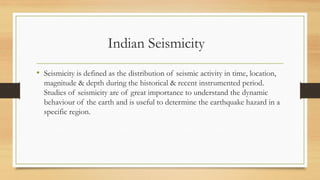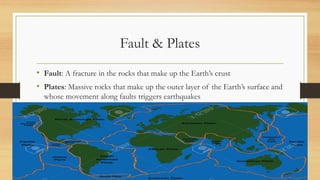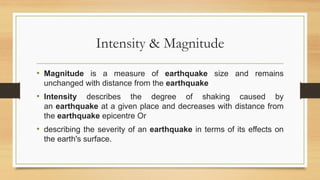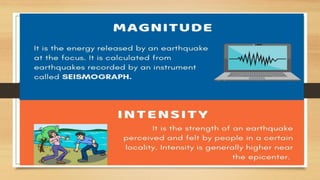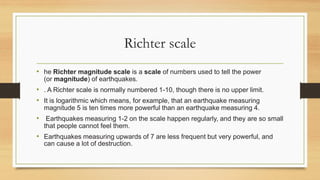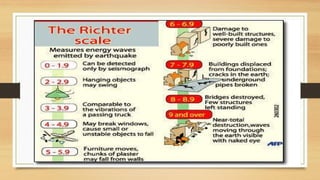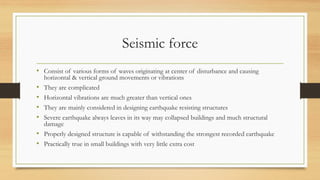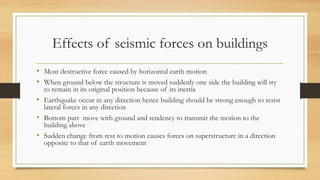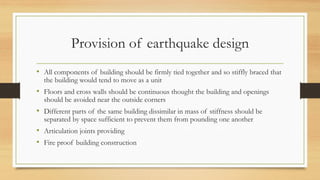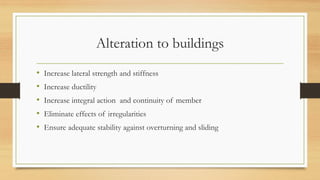This document discusses earthquake resistant construction techniques. It defines key terms like focus, epicenter, magnitude, and intensity. It describes how seismic waves are generated and how structures behaved during past earthquakes. Techniques to plan earthquake resistant buildings are covered, like separating building parts, avoiding irregularities, and using articulation and expansion joints. Foundation design considerations in seismic zones and permissible increases in soil bearing capacity are also summarized. Seismic coefficients for different zones in India are provided.




